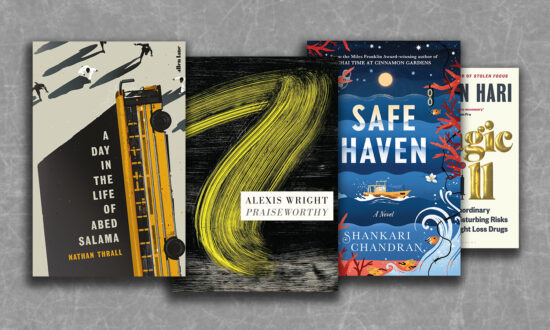Leading lady Vera is thrown into this uneasy atmosphere when she returns to her childhood holiday home at Corny Point with partner Oswald for a last visit before it is sold. Both, of course, have secrets. The skeletons are about to come creeping out of the closet.
Told in a series of richly drawn vignettes – some only a few paragraphs long – Jäger’s debut novel flits between Vera and Oswald’s trip to the coast and events from Vera’s past. Most of her memories revolve around vacations at the same beach house in her youth, when she and sister Emmeline spent their days pretending to be spies and monsters with Gary, the son of their mother’s friend.
While the main storyline is told in past-tense, Jäger gives these flashbacks the immediacy of present-tense: for Vera, the past is still vividly alive.
As events build up, fragment by fragment, toward climactic scenes between Vera and Oswald, and (years earlier) Vera and Gary, Jäger’s use of visceral bodily imagery highlights the contrast between these characters. Vera becomes enthralled by a maggot-riddled bird she finds on the beach, is “high with pleasure” after scratching at mosquito bites until her arms are streaked with blood, and as a child was fascinated by the magazines her dad kept hidden – by “what might be done to a body”. The young Gary likewise revelled in describing the murder cases for which Adelaide is renowned, whereas Oswald, to Vera’s annoyance, cannot abide even dirty feet.
Children – old selves, potential offspring, even infantile adults – haunt Bird Bones. Appearing in memories, apparitions and dreams, they are at the heart of the conflict between Vera and the men she once loved. Jäger extends this theme to her writing style. The nursery-rhyme cadence of short, sing-song sentences occasionally becomes grating, but is effective when juxtaposed with the novel’s darker images (of a hanged body, for instance: “Swing low, sweet chariot, swing low. Swing to and fro… Swing up. And then swing down”).

Get InReview in your inbox – free each Saturday. Local arts and culture – covered.
Thanks for signing up to the InReview newsletter.
Vera is an aspiring writer who values most things in her life, from her work to her relationships, for the creative material they provide. Given her love of evocative embellishment, she may not be a wholly reliable narrator, but her stories – like the “dark, delicate” beached bird – are always grimly compelling.
Bird Bones, by Michelle Jäger, is published by Glimmer Press and distributed by Wakefield Press.
Support local arts journalism
Your support will help us continue the important work of InReview in publishing free professional journalism that celebrates, interrogates and amplifies arts and culture in South Australia.
Donate Here




